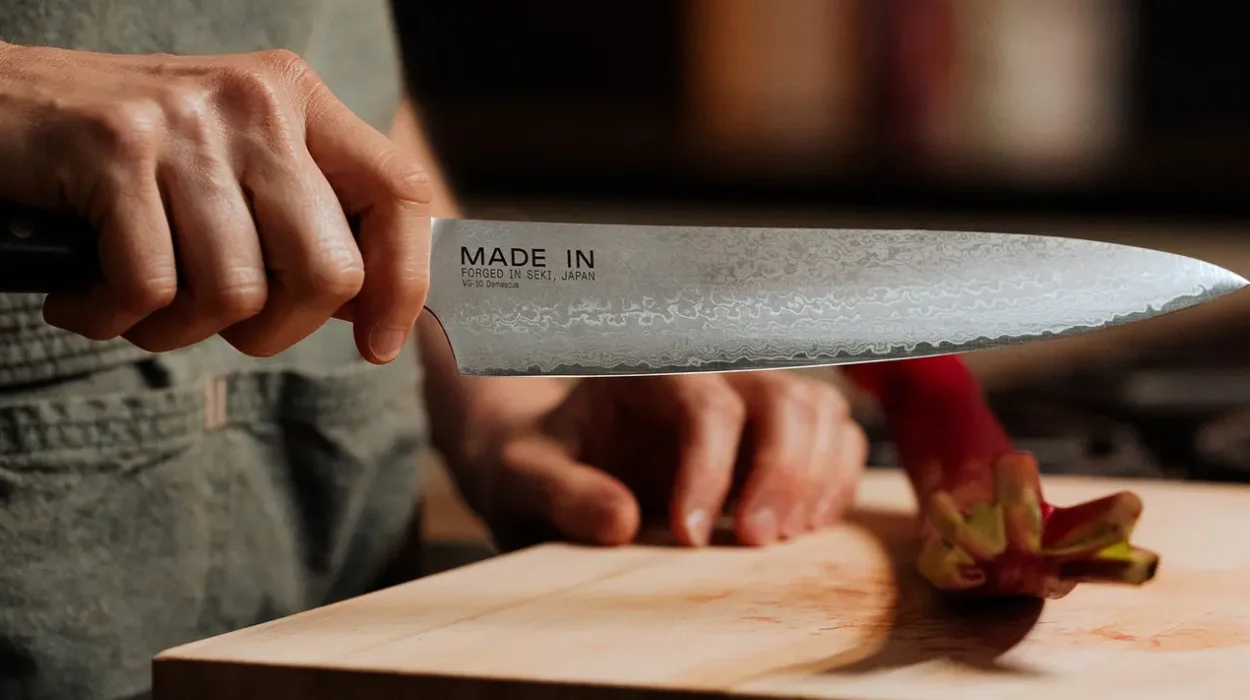For culinary enthusiasts and professional chefs alike, a well-maintained knife is an extension of one’s hand. When it comes to German knives, known for their durability and precision, maintaining their edge and shine is crucial. This article will provide valuable German knife polishing tips to ensure your knives remain in top condition.

Why Polish Your German Knives?
Polishing your knives is not just about aesthetics. It’s about preserving the tools that help you create culinary magic. A polished knife performs better, cuts more smoothly, and lasts longer.
The Importance of Regular Maintenance
Regular maintenance of your German knives ensures they remain sharp and effective. Neglect can lead to rust and dullness, affecting your cooking efficiency.
Understanding Your German Knife
Before diving into polishing, it’s essential to understand the specifics of your German knife. These knives are typically made from high-carbon stainless steel, which requires specific care to maintain its integrity.
Types of German Knives
German knives come in various forms, from chef’s knives to paring knives. Each type requires a unique approach to polishing and maintenance.
Essential Tools for Knife Polishing
To polish your knives effectively, you’ll need a few essential tools:
Polishing Cloth
A soft cloth is crucial for applying polish and buffing the knife’s surface without scratching it.
Metal Polish
Choose a high-quality metal polish designed for stainless steel to ensure the best results.
Protective Gear
Safety first! Use gloves and eye protection when handling polishing chemicals.
Step-by-Step Guide to Polishing Your German Knife
Follow these steps to polish your knife to perfection:
Step 1: Clean the Knife
Start by cleaning the knife with warm soapy water to remove any residue. Dry thoroughly with a soft cloth.
Step 2: Apply Metal Polish
Using a small amount of metal polish, apply it to the knife blade with a polishing cloth. Rub gently in circular motions.
Step 3: Buff the Blade
Once the polish is applied, use a clean section of the cloth to buff the blade until it shines.
Step 4: Rinse and Dry
Rinse the knife under warm water to remove any polish residue and dry it immediately to prevent water spots.
Common Mistakes to Avoid
Even seasoned chefs can make mistakes when polishing their knives. Avoid these common pitfalls:
Using Abrasive Materials
Avoid using abrasive sponges or cloths that can scratch the blade’s surface.
Skipping the Rinse
Always rinse the knife after polishing to ensure no polish residue remains.
Advanced Polishing Techniques
For those looking to take their knife polishing to the next level, consider these advanced techniques:
Using a Leather Strop
A leather strop can be used to refine the knife’s edge and add an extra layer of polish.
High-Speed Buffing Wheels
For professional results, consider using a high-speed buffing wheel designed for knife blades.
Maintaining Your Knife Post-Polish
After polishing, proper maintenance is key to prolonging the shine and sharpness of your knife.
Proper Storage
Store your knives in a knife block or on a magnetic strip to prevent dulling and damage.
Regular Sharpening
Keep your knives sharp by using a honing steel or a knife sharpener regularly.
Conclusion: The Art of Knife Polishing
Polishing your German knives is an art that combines skill and care. By following these German knife polishing tips, you ensure that your knives remain a reliable and beautiful tool in your kitchen arsenal.

FAQ
How often should I polish my German knives?
Polishing should be done as needed, typically every few months, depending on usage.
Can I use any metal polish on my knives?
It’s best to use a polish specifically designed for stainless steel to avoid damaging the blade.
Is it safe to polish knives at home?
Yes, with the right tools and precautions, polishing knives at home is safe and effective.
For more detailed insights into the art of knife-making in Solingen, Germany, visit this comprehensive resource. Additionally, explore more on German knife safety to enhance your kitchen practices.
This article contains affiliate links. We may earn a commission at no extra cost to you.


